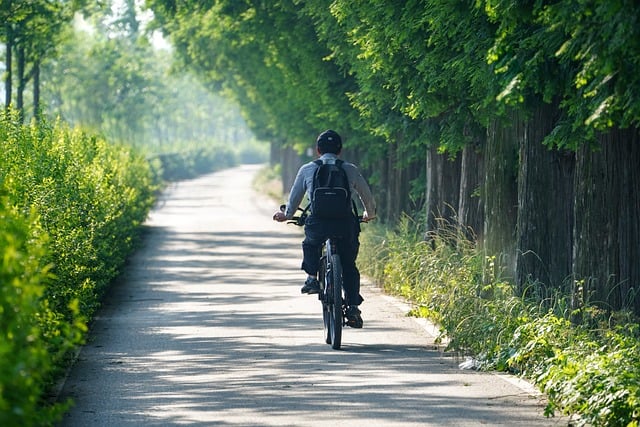
Rot On: How to Compost at Home
By Holly Shaftel, contributing writer
In early 2019, I was looking for ways to save money at home. One day, I thought, “Hmm, maybe I can get rid of my trash bill!” I looked at my kitchen garbage and noticed how much plastic and food waste was in there.
“What am I doing?!” I asked myself.
I felt like a hypocrite — at the time, I was working in climate change communications, but I wasn’t living an eco-friendly life. I knew it was time for a change. That’s when I started reducing my waste and composting, which means turning things such as leaves and food scraps into fertilizer.
Let’s talk about why we should compost and how to do it.
Why Should We Compost?
We’re living in a world that’s getting hotter because of human activity. We also have problems such as damaged lands, world hunger, and too much trash. When people waste food, it often goes to landfills and creates methane, a gas that traps heat in the atmosphere and worsens climate change.
In fact, the United Nations says that 8-10% of global greenhouse gas emissions come from food loss and waste (and cost the US about $1 trillion per year). That’s about five times more than all airplane emissions combined!
Even actions such as raking leaves can be harmful. Leaves are nature’s mulch — they protect soil, give bugs a home, and make great compost. That’s why some people say “They’re called ‘leaves’ because you’re supposed to leave them!”
Composting: The Awesome Option
There’s a better place to put your green waste: in a compost bin or pile! Once it biogrades, or breaks down, it becomes a precious, nutrient-rich soil — if done correctly. In the end, you’re completing a natural cycle, giving back to the earth what came from it.
And composting helps solve big problems:



Want to learn more? Check out permaculture, a way of working with nature, instead of against it, to grow food, cycle waste, build homes, and create communities.
| Did You Know? According to EOS Data Analytics, a company that uses satellites to help farmers and foresters, soil stores a massive amount of carbon — about twice as much as what’s in the air and 3.5 times more than all living beings combined. |
Composting 101
Composting is happening all over — from schools and businesses to city programs that collect food scraps. You can also do it at home! Here’s a starter guide, and check out this page for more information.
 Where Can You Compost?
Where Can You Compost?
You can compost indoors or outdoors. Think about:
- Where you live
- How much and what kind of food or yard waste you make
- How much time you want to spend on composting
 Cold vs
Cold vs  Hot Composting
Hot Composting
There are two main ways to compost:
Cold composting is slow and easy.
- Good if you don’t have much waste
- Great if you want a “set it and forget it” method
Hot composting is faster and more hands-on.
- Better if you make more waste
- Great if you want compost more quickly and don’t mind a little work
Not sure which method to choose? Here’s a table to help you decide:
 Hot vs
Hot vs  Cold Composting
Cold Composting
 Hot Composting (Fast Method) Hot Composting (Fast Method) |  Cold Composting (Slow Method) Cold Composting (Slow Method) |
|---|---|
| Temperature: 130–160°F (54–71°C) (Although, some say the temperature should be below 150.8°F, or 66°C, to keep helpful microbes alive.) | Temperature: Whatever the outdoor temperature is (no heat buildup) |
| Speed: Ready in 4–8 weeks (with proper care) | Speed: Takes 6 months to 2 years |
| Requires: – A good balance of greens (wet stuff) and browns (dry stuff) – Turn the pile every few days – Keep it damp, like a wrung-out sponge | Requires: – Just keep adding stuff – Nature does the rest |
| Pros: – Works fast – Kills weed seeds and bad germs | Pros: – Super easy – Great for beginners |
| Cons: – Needs more work and attention | Cons: – Takes longer – Might not kill bad germs or weed seeds |
 What Can You Compost?
What Can You Compost?
Now that you’ve picked a composting method, let’s talk about what you can put in it!
You can use most of the same stuff for both hot and cold composting, but cold composting is better with safe, simple materials, since it doesn’t get hot enough to kill germs or weed seeds.
Tip: Chop or break things into smaller pieces (no bigger than a finger) to help them break down faster!
What to Add (and What to Avoid)
| Material |  Hot Composting? Hot Composting? |  Cold Composting? Cold Composting? |
|---|---|---|
 Fruit & veggie scraps Fruit & veggie scraps |  Yes Yes |  Yes Yes |
 Coffee grounds & filters Coffee grounds & filters |  Yes Yes |  Yes Yes |
 Tea bags (no plastic) Tea bags (no plastic) |  Yes Yes |  Yes Yes |
 Grass clippings Grass clippings |  Yes Yes |  Yes Yes |
 Dry leaves Dry leaves |  Yes Yes |  Yes Yes |
 Shredded cardboard/paper Shredded cardboard/paper |  Yes Yes |  Yes Yes |
 Straw or hay Straw or hay |  Yes Yes |  Yes Yes |
 Sawdust (untreated wood only) Sawdust (untreated wood only) |  Yes Yes |  Yes Yes |
 Paper towels/napkins (plain) Paper towels/napkins (plain) |  Yes Yes |  Yes Yes |
 Garden trimmings Garden trimmings |  Yes Yes |  Yes Yes |
 Plant-based food scraps (no oil) Plant-based food scraps (no oil) |  Yes Yes |  Yes Yes |
 Eggshells (crushed) Eggshells (crushed) |  Yes Yes |  Yes Yes |
 Weeds with seeds Weeds with seeds |  Yes (heat kills seeds) Yes (heat kills seeds) |  No (seeds survive) No (seeds survive) |
 Diseased plants Diseased plants |  Yes (heat kills seeds) Yes (heat kills seeds) |  No No |
 Meat, bones, dairy, greasy foods Meat, bones, dairy, greasy foods |  Use the bokashi method (see below) Use the bokashi method (see below) |  No No |
 Animal waste (pet feces) Animal waste (pet feces) |  Only with special system Only with special system |  No No |



 Air, Water, and Balance Matter!
Air, Water, and Balance Matter!
To keep your compost healthy and working right, it needs:
- Air (so it doesn’t get smelly)
- Water (like a damp sponge — not too wet or too dry)
- A mix of browns and greens
The best balance is 2–4 parts “browns” (dry stuff) for every 1 part “green” (wet stuff).
- Browns = Give structure, reduce smell, and soak up moisture
- Greens = Add nitrogen and help break things down
Examples of Greens and Browns
 Greens (Nitrogen-Rich) Greens (Nitrogen-Rich) |  Browns (Carbon-Rich) Browns (Carbon-Rich) |
|---|---|
 Fruit and vegetable scraps Fruit and vegetable scraps |  Dry leaves Dry leaves |
 Coffee grounds and filters Coffee grounds and filters |  Shredded newspaper Shredded newspaper |
 Grass clippings Grass clippings |  Straw or hay Straw or hay |
 Tea bags (no plastic) Tea bags (no plastic) |  Sawdust (from chemical-free wood) Sawdust (from chemical-free wood) |
 Plant-based food scraps (no oils or meat) Plant-based food scraps (no oils or meat) |  Pine needles Pine needles |
 Fresh garden trimmings (such as weeds) Fresh garden trimmings (such as weeds) |  Small wood chips Small wood chips |
 Crushed eggshells Crushed eggshells |  Shredded plain paper Shredded plain paper |
 Fresh plant cuttings (not diseased) Fresh plant cuttings (not diseased) |  Cornstalks or other dry plants Cornstalks or other dry plants |
 Manure from plant-eating animals (such as cows, rabbits, and horses) Manure from plant-eating animals (such as cows, rabbits, and horses) |  Cardboard (broken into small pieces) Cardboard (broken into small pieces) |
Now that you know what to compost, let’s talk about where to put it! Check out the different types of compost bins, which composting methods they work best for, and why they might be a good fit for you.
Types of Compost Bins
| Bin Type |  Hot Composting? Hot Composting? |  Cold Composting? Cold Composting? | Why? |
|---|---|---|---|
| Open bin (example) |  No No |  Yes Yes | Good for large amounts, and needs less care. |
| Closed bin (example) |  Yes (with effort) Yes (with effort) |  Yes Yes | Hot: Keeps heat in better than open bins. Cold: Slower but neat and contained. |
| Tumbler bin (example) |  Yes Yes |  No No | Keeps heat in and easy to turn often. |
| Kitchen bin (example) |  No No |  No No | They’re for collecting scraps indoors, which then go to an outdoor bin or service. |
 Other Composting Methods
Other Composting Methods
 Vermicomposting (Indoor or Outdoor)
Vermicomposting (Indoor or Outdoor)
Vermicomposting is composting with worms — but not just any worm! You need red wigglers, which love compost and are easy to care for. They’re great at breaking down food waste. Want to get started? Here’s a beginner’s guide.
 Bokashi “Composting” (Indoor or Outdoor)
Bokashi “Composting” (Indoor or Outdoor)
Bokashi composting is perfect for things that regular composting can’t handle, such as meat, bones, dairy, greasy foods, and candy. It’s not really composting, but a type of fermentation. The word “bokashi” means “fermented organic matter” in Japanese, and it’s a fast and efficient way to break down food waste.
How it works:
- Put waste into a small airtight container (with a drain at the bottom to catch a liquid called “bokashi tea,” which can be used on your plants when mixed with water).
- After each layer of food, add some bokashi bran, which has helpful microorganisms in it to start fermentation.
- Seal the bin and wait for a couple of weeks — it will look like pickled food when done.
- You can either bury it in soil or add it to regular compost to finish breaking down.
Visit Bokashi Living to learn more and buy a starter kit!
 Trench Composting (Outdoor)
Trench Composting (Outdoor)
Trench composting is simple! Dig a hole (1–1.5 feet deep, or 0.3-0.5 meters), throw in your food waste, cover it up, and leave it alone. It works for meat and dairy, too, but it’s slow like cold composting. Here are some tips:
- Dig away from plant roots to avoid harming them.
- Don’t plant anything on top of the trench, because the ground will sink while the food breaks down.
- Keep the food waste moist — add water if you live in a dry place.
Conclusion: Reconnect with Nature
Over the years, humans have become more distanced from nature because of technology (TV, video games, and the internet). But composting is a way to reconnect with the Earth and help solve climate and biodiversity issues. Plus, it can make you feel more connected to your food and the environment!
When I started composting, I realized how much our everyday choices impact the planet. It also improved my mental health. Let’s show nature a little respect!
Main image: Photo of compost. Image by Herbert from Pixabay.





